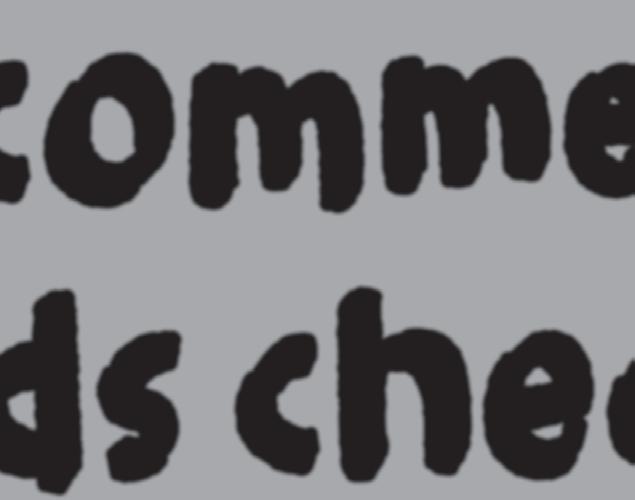































































































leaves no page unturned when it comes to helping every school, parent and child with reading progress.









has been designed to allow schools, parents and pupils to concentrate on the aspects of reading that really matter and that will help all children to become skilled and confident readers.
Read Like a
covers everything you need to know when it comes to reading — unpicking the essential words that children need to be able to read while cutting through all the jargon. The book provides activities, practical guidance, advice, word lists, reading strategies and much more.


One of the most important things to understand about reading is the difference between fluency and comprehension. They are very different things!
Fluency is a reader’s ability to confidently read words within a text. Fluent readers read each word accurately and at a good reading speed, without having to stop too often to ‘sound out’ a word.
Comprehension means understanding what you read and making sense of it. In school you will often be asked to show this by answering different types of questions. Comprehension is made up of important skills such as retrieval of information and inference.


















This book covers all of the different aspects of fluency and comprehension in detail. Both of these aspects of reading will be taught in school and need to be practised at home in order for children to be confident readers who understand what they are reading. The Parent Zone at the end of the book helps parents to support their children to become Reading Ninjas!
















These words are very important because you will use them a lot when you read, speak or write. You need to be able to read, say and spell all of these words.
the a do to today of said says are were was is his has I you your they be he me she












Can you read all of these words? Can you spell all of these words?





























High-frequency words (HFWs) are very common words that you will come across all the time when you are reading. So, it’s vital to be able to spot them and to be able to read them aloud. This is known as sight reading. It’s an important part of becoming a quicker and more fluent reader.


These 13 words, on average, will make up 25% of any text that you will encounter in all sorts of reading material * . To become a reader, you need to be able to read these words on sight.
a and for he in is it of that the to was you
Practise reading these words daily until you can read all 13 aloud with complete confidence. part of becoming a quicker and more fluent reader.





The following pages contain the first 100 high-frequency words, and a further 200 more. These words, on average, account for 50% of the words in any text that you will encounter in school.
It is essential that you can read all of these high-frequency words. Daily practice of these words is crucial, and once you can read them all by sight, you will be on the way to becoming a confident and fluent reader!
Practise reading these words aloud every day. Ask a grown up to help you.

As a parent, mastering these words with your child is one of the most effective and powerful things you can do to develop them as a proficient reader. Ensure your child reads through the lists aloud every day. If they struggle with a word, model how to say the word aloud. Come back to words they struggle with.
Create flash cards
Ask an adult to quiz you on sets of 20 words each day.


Cut out some small paper squares and write a letter on each one. Spell out the words using the letter tiles.
Read books!
Oh yes! Be sure to read your reading book each day.
Create sentences Write sentences that contain as many highfrequency words as possible.
Read books aloud, taking turns between adult and child. Can you spot any highfrequency words as you read?
Ask a grown up to hide 10 flash cards around a room. Read them aloud when you find them.

Flour or sand tray Pour a thin layer onto a tray or plate. Write each high-frequency word in the flour or sand.
Create two identical sets of flash cards. Jumble them up, then turn face down. Find the matching pairs!
* Johns, J.L. and Wilke, K.H. (2018) ‘High-Frequency Words: Some Ways to Teach and Help Students Practice and Learn Them’, Texas Journal of Literacy Education, 6 (1), pp. 3–13.





























Reading comprehension is like going on an adventure inside a book! When you read a story or an article, it’s not just about saying the words out loud. Reading comprehension means understanding what you read and making sense of it, and showing this by answering different types of questions.



Everything in the book to this point has been all about your ability to read the words that you see and read them fluently (smoothly and with ease). You need to be a fluent reader so that you can read texts at a good speed while still reading all of the words correctly. If you weren’t fluent, you would have to stop on words regularly and sound them out; you would be spending a lot of effort and mental energy on just reading the words.













Reading comprehension, however, is different. Comprehension means your understanding of what you are reading. Once you can read fluently, you can focus on what the words mean (you can begin to comprehend the text).

In school, comprehension is important. In most reading lessons, different parts (domains) of comprehension will be taught. These parts are:

When you read, you use your imagination to picture the characters and the places in your mind. You might feel happy, sad or excited depending on the words that you are reading.
Sometimes, you might have questions while reading. Maybe you wonder why a character did something or what will happen next. That’s great! It means you’re thinking deeply about the story and trying to understand it better.


• explaining the meaning of words
• retrieving information from the text
• making inferences
• summarising larger pieces of text
• making predictions





• explaining word choices
• comparing information.





Often , as parents, we think reading is simply how well our child reads the words on the page. In fact, your child’s ability to answer different questions on what they have read is what they are measured on in school.
















Skimming and scanning a whole text is an important skill when it comes to reading. Essentially, your ability to skim and scan is your ability to find the information you need as quickly and correctly as possible.

When skimming and scanning, you need to move your eyes over a text to locate a specific piece of information, but you must apply a strategy to ensure you find it easily. If you can skim and scan well, then you should be able to move from a whole page down to a specific sentence or even a word.







Once you have read a text, it’s important to try and remember if the information you are looking for was in the beginning, middle or end of the text.

You can use clues like headings, subheadings, images and quotations to help you get to the correct area of the text.



Moving from the whole text to the correct section or paragraph of a text.
Scanning:
Looking for specific key words after skimming to the correct paragraph or section.


Normally you would use skimming and scanning once you have read the text and you are answering questions about it. You can develop your skimming and scanning skills with the activities on the next page.







NINJA TIP:

Read the text first. As you read, underline any words you do not know.

He felt a hunger like never before. The full moon pushed aside the clouds and he looked up at it. A sudden pain prickled his skin. He let out a shout, but it was more of a howl. Hair began to sprout all over his body.

His mouth and nose began to merge into a snout. His teeth began to grow long and pointed. Then his ears grew wider and flatter. All the while the hair grew and grew. His clothes ripped and he fell to the floor. He was on all fours now , howling and howling up at the moon.

Look carefully at the extract to find each of the words below.
sprout prickled merge teeth clouds hunger ripped floor flatter shout


NINJA TIP:



Use a pencil to circle the words you are looking for. Press lightly and rub out at the end of the task so you can repeat the exercise again at a later date.












The five Ws and How are: who, what, where, when, why and how. Questions that begin with one of these words require you to retrieve information and to write a clear answer in the space provided. Use the key words in the question strategy ( p.64) to locate the information you need in the text.
Deserts are found on all seven continents, but what is a desert? A desert is a region that receives less than 25 cm of rain per year. They can be ‘hot and dry’, ‘semi-arid’, ‘cold’ or ‘coastal’ and make up one third of our planet’s land area. Deserts are also called ‘arid areas’ which comes from the Latin word ‘aridus’ meaning dry.




Approximately one billion people live in the desert regions on Earth. Only 20% of the world’s deserts are made up of sand; most deserts are icy or made up of rocks and gravel. The largest hot desert in the world is the Sahara in North Africa which is almost as large as Europe. The Sahara desert is also the hottest desert in the world. The driest desert in the world is the Atacama Desert in South America where no rain fell for 401 years, between 1570 and 1971!








Relax! This text might contain lots of unknown vocabulary. Just highlight or circle it and move on. If you get a question about an unknown word, it will be easy to find it.






Here are some questions you might be asked about this text. Try to spot the key words in each question.
How many continents can deserts be found on?

What are deserts also called?


What percentage of the world’s deserts are made up of sand?

Where is the largest hot desert in the world?

What is the driest desert in the world?


What fraction of Earth’s land area is desert?

How many years were there no rain in the Atacama Desert?

How many types of desert are there?
What does ‘aridus’ mean?














Imagine you have a big bag of colourful building blocks. Each block is special and has a different shape and colour. Now, let’s say you want to build a cool structure with these blocks. To do that, you need to put the blocks in the right order, one after another, so that the structure is strong and won’t fall down.





In reading comprehension, sequencing is just like building with those blocks. When you read a story or a passage, you need to understand the order of events – the order of things that happen.
Let’s say you are reading a story about a boy who went to the park. First, the boy might wake up in the morning and have breakfast. Then, he might get dressed and put on his shoes. After that, he might walk to the park and start playing on the swings. Finally, when he gets tired, he might go back home.


To understand the story, you need to know the sequence or order of events. It’s like putting the building blocks in the right order: breakfast, getting dressed, going to the park, playing on the swings, and going home. If you mix up the order, the story won’t make sense. It’s just like if you were to put the building blocks in the wrong order, your structure would fall down.
Sequencing helps us understand stories and information better. By understanding the right order, we can enjoy the story and learn more from it.


In school, you will often get asked to sequence the order of events or information in a text (put them in the order they happened). Read the next pages to see how to sequence information in three easy steps.













Sequencing is very simple when you have a clear strategy to follow. This strategy uses symbols to help you find and sequence information.
circle square triangle star plus
You can draw these symbols on or next to the exact information in the text. This helps you to see the order and means you don’t have to hold lots of information in your head.
Here is a question you might be asked to answer about a text on the next page. The question asks you to sequence the information in the order that it occurs in the text.




Number the statements 1-5 to show the order they occur in the text.






















There are so many wonderful books to read, but sometimes it can be tricky to know which books to start with. The next few pages provide book recommendations from two awesome teachers who are experts in books - Stephanie Elliot and Dean Boddington.
These books can and should be enjoyed at school and — more importantly — at home.

Remember, by reading more challenging books to your children, you are exposing them to more complex language structure, vocabulary and social situations which is great for their wider development.














There are so many wonderful books to read and enjoy. Everyone has their favourites! Here is a short list of books that this Ninja loves. Read them and see what you think.
Tabby McTat by Julia Donaldson and Axel Scheffler Reception and Year 1
The Day The Crayons Quit by Drew Daywalt and Oliver Jeffers

Year 1 and Year 2
Room on the Broom by Julia Donaldson and Axel Scheffler Reception, Year 1 and Year 2
Revolting Rhymes by Roald Dahl and Quentin Blake
Arthur and the Golden Rope by Joe Todd Stanton
The Miraculous Journey of Edward
Tulane by Kate DiCamillo and Bagram Ibatoulline
Year 3 and beyond
Year 3 and Year 4




Year 4 and beyond

Friend or Foe by Michael Morpurgo Year 4 and beyond
Shackleton’s Journey by William Grill
Rose Blanche by Ian McEwan and Roberto Innocenti
Skellig by David Almond
Room 13 by Robert Swindells

Year 5 and Year 6
Year 6 and beyond
Year 5 and Year 6
Year 6















Common exception words, also known as tricky words or irregular words, are specific words in the English language that do not follow the usual spelling patterns or rules. These words cannot be easily decoded by sounding them out and often need to be learned and recognised by sight in Year 1 and Year 2.
Learning to spell these words correctly is very important as they don’t follow the usual spelling patterns or rules.
To help your child with common exception words, you can use various strategies such as:








Show these words to your child over and over again so they know them by sight. They should be able to just see them and say the word aloud without thinking about it. Practise reading and spelling the words through the use of games and flash cards.


Help your child understand the meaning of these words by using them in sentences or discussing their usage in everyday situations. This can improve their understanding and make the words more meaningful.



